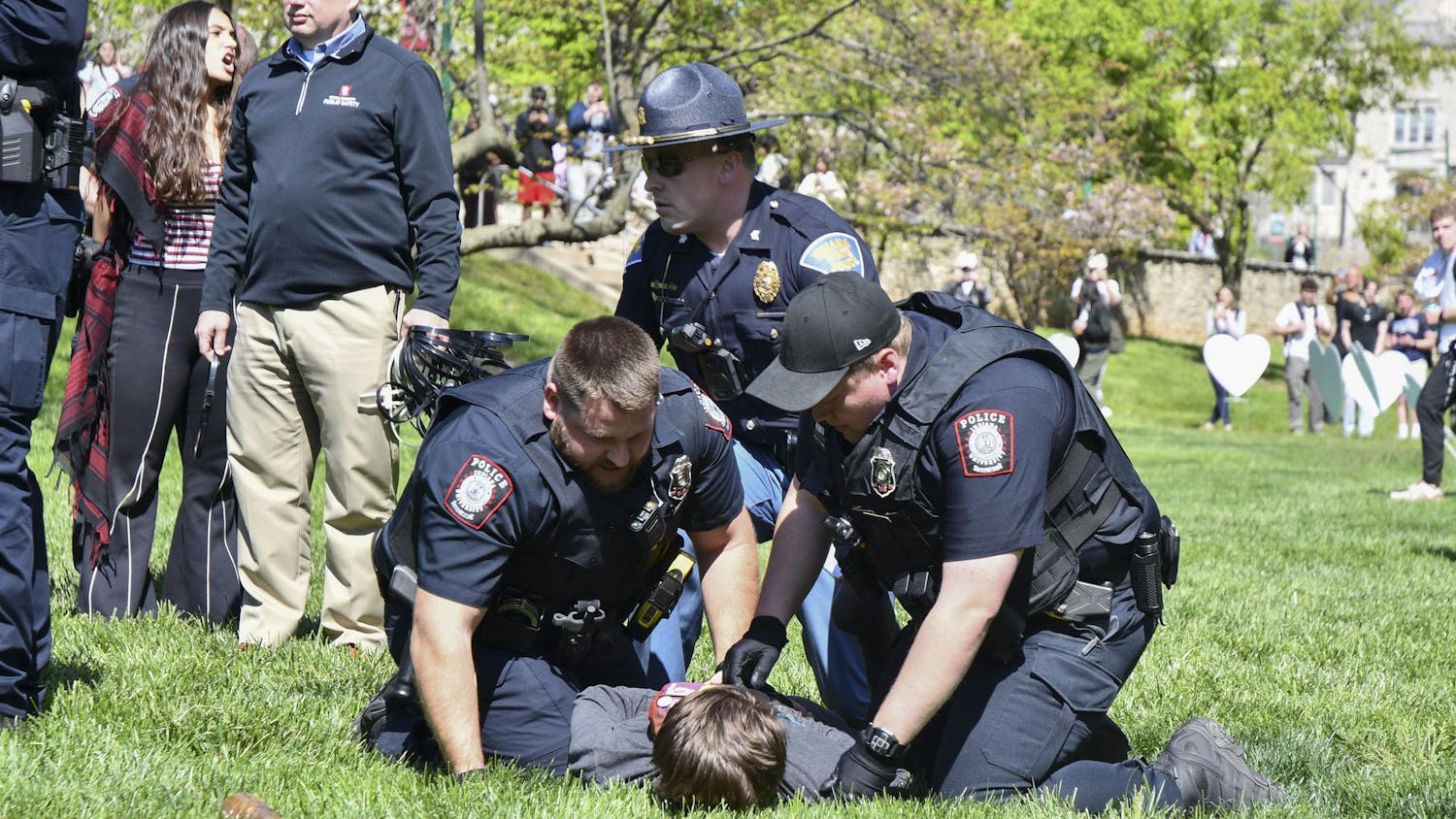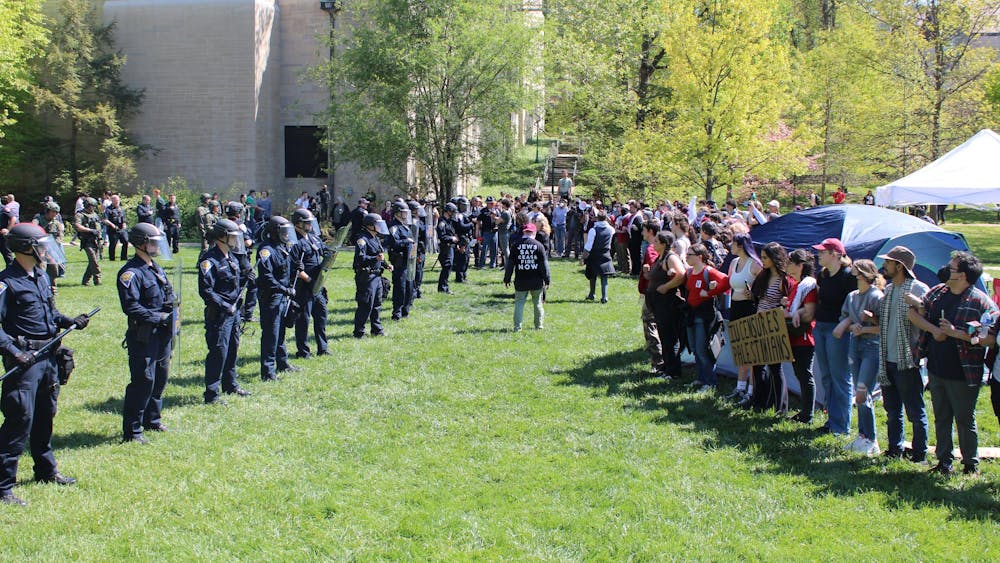Seven years ago, hiking through an area soon to be developed by his construction company, Steve Bodi said he tried to shoo away any deer he encountered.
“I felt bad for the deer,” Bodi said. “I knew we would be building apartments, and that would drive those deer out.”
In 2005, that project became MeadowCreek Luxury Apartments at South Sare Road. Bodi said residents still report seeing deer in the neighborhood.
“I must’ve not scared them very far,” he said.
Urban deer in Bloomington have been the subject of a controversy that resulted in the city’s creation of an 11-member deer task force, charged with producing information about and solutions to the perceived deer problem. The task force’s efforts culminated in a 200-page report released in October that sparked further controversy because it proposes lethal means to reducing the urban deer population.
While some are debating the use of trap-and-kill culling, others are discussing the possibility that development displaced the deer and whether developers have a responsibility to account for the wildlife they affect. The report identifies property development as one of the reasons there are deer within city limits.
“That’s rubbish,” WS Homes Co-President Eric Stolberg said.
In 2005, WS Homes began development of the Renwick neighborhood at Moores Pike. Several respondents to the task force’s survey, and the report itself, specifically identified Renwick’s development as a definitive starting point for the problem with urban deer.
Stolberg said the effects of development are exaggerated.
“I think that the deer population has increased substantially,” Stolberg said. “But because there are no natural predators, people see more of them and that creates the perception of a problem.”
There has never been a count of the deer in Bloomington, before or after development, but deer definitely lived in green spaces that were leveled, 40-year Bloomington resident Martha Wailes said.
“I saw deer all the time in the YMCA, Renwick and Covenanter areas,” Wailes said. “Before and after they were developed.”
Wailes has been walking her dog around Bloomington since before 2005. Like many other residents, her garden and landscaping have been destroyed by deer, she said. She built a fence a few years ago to keep them out and said it solved a lot of her problems with the deer.
However, she also said the deer weren’t a problem before buildings went up.
“When those areas were developed, that’s what achieved critical mass,” Wailes said.
Wailes lives next door to what used to be Deer Park, a fenced-in nature preserve, which was home to deer until it was developed.
Bloomington industrialist Sarkes Tarzian owned Deer Park, and nearby Deer Park Manor, and imported deer to the park in the ‘50s and ‘60s. Bryan Park resident Michael McCafferty said other “deer estates” were popular during that time.
“The Dellecamps in Montgomery Camp, a rich family, had a deer park with a hundred deer,” McCafferty said. “It was fashionable, I guess.”
Deer Park was developed in 2001. The fences went down, the buildings went up and no one is sure about what happened to the deer, Wailes said. Some respondents to the task force’s survey said Deer Park might be another origin of urban deer.
Wailes said she’s not so sure.
“It’s my feeling the bulk of the deer did not come from deer park,” she said.
But IU biologist Angie Shelton said she is sure of it.
“I think the developments in southeast Bloomington have definitely affected the movement of deer,” Shelton said. “It wasn’t until those Renwick wood lots were developed that those deer moved into urban areas.”
Shelton said she works closely with task force member Keith Clay. She said the task force suggests wildlife should be part of an analysis when a developer inspects an area.
“Deer love edge,” according to the report.
The task force recommended property developers better manage the edges construction creates so deer are less likely to inhabit urban areas. Deer live near the edge of wooded areas because the trees provide shelter. Yards and gardens provide food supply.
That recommendation and all the others, including the implementation of lethal means, will be presented to the Bloomington City Council in late November. The council can reject, accept or pass over any recommendation. As such, it’s not clear whether or not property developers will be required to take any extra measures.
The meeting will be open to the public.
Bodi said he thinks his company, and other developers, should be mindful of wildlife when they build in green spaces. However, he said it’s difficult to manage the needs of nature along with the needs of people.
“I don’t know what you can expect developers to do,” Bodi said. “I hope there’s some balance in there.”
City growth could cause increasing urban deer population
Get stories like this in your inbox
Subscribe





